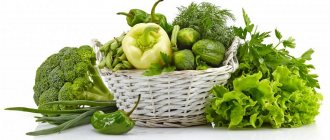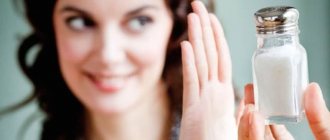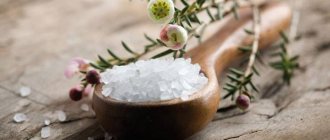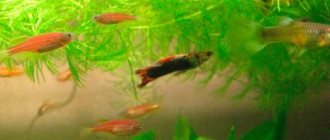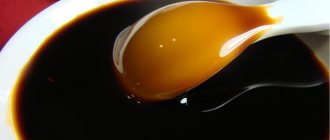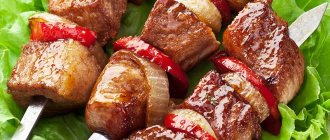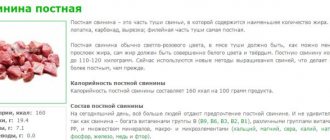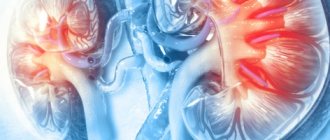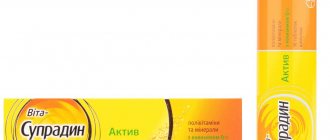April 1, 2011
How much salt is needed, what foods contain it, how to limit yourself in salt and why - says a nutritionist.
There are practically no food products that are clearly harmful or beneficial. Problems begin with a deficiency or excess, this also applies to salt. Its increased consumption is a path to cardiovascular diseases, but a lack of salt in the diet is not always desirable. Yulia Chekhonina, Candidate of Medical Sciences, employee of the Medical Nutrition Clinic of the Research Institute of Nutrition of the Russian Academy of Medical Sciences, expert nutritionist of the TV project “Give Yourself Life” answers popular questions about limiting salt.
Is salt harmful?
Table salt is very necessary for the human body.
It consists of sodium and chlorine ions, elements important for the life of the body. The ABCs of healthy eating
20 simple facts about how to eat right will help you build a balanced diet for health and well-being.
Sodium
supports metabolic processes at the intracellular and interstitial levels, allowing fluid to be retained in the cells and tissues of the body.
Chlorine
is also involved in regulating fluid circulation in cells and is necessary for the synthesis of hydrochloric acid, a component of gastric juice.
An excess of salt, first of all, leads to fluid retention
.
This affects weight gain and also negatively affects the functioning of internal organs. An excess of salt is especially dangerous for diseases of the kidneys and cardiovascular system. If they are present, it is recommended to limit salt in the diet.
Are sea, iodized and other types of salt healthy?
Followers of a healthy lifestyle advise giving up regular table salt or replacing it with healthier options.
The most common type of product is sea salt. Its composition is distinguished by a high content of various micro- and macroelements: potassium, magnesium, calcium, zinc, fluorine. Followers of a healthy lifestyle claim that this sea salt improves skin condition, helps improve the functioning of the thyroid gland and increases vitality. However, no pronounced positive effect was found when taken orally in normal quantities.
Iodized salt contains up to 40 mg/kg of iodine in the form of potassium and sodium compounds. It is recommended for the prevention of iodine deficiency conditions in endemic regions. The product has a limited shelf life and only works when added to cold or warm dishes. During heat treatment, iodine evaporates. No negative effects on the body when consumed within the daily norm have been registered.
Among the new and popular products, multi-colored salts are also appearing on the shelves. Halite (or pink Himalayan salt) in its composition consists of 95-98% sodium chloride and 2-3% of the so-called polyhalite - aqueous compounds of potassium, magnesium and calcium sulfate, as well as small amounts of iodine and fluorine. Cosmetologists, culinary specialists and followers of a healthy lifestyle vied with each other to talk about the wonderful properties of the mineral. However, there have been no reliable studies answering the question of whether pink Himalayan salt is beneficial, and its benefits have not yet been proven.
Can you harm yourself with a salt-free diet?
With a complete refusal
of salt, the consequences are the most unfavorable: a general deterioration in health, nausea, loss of appetite, aversion to food, indigestion due to a decrease in the production of hydrochloric acid, muscle weakness, muscle cramps, a sharp decrease in blood pressure.
However, in real life, with sufficient nutrition, it is unlikely to encounter them. The diet of a modern person includes many ready-made products
.
This is an abundance of cheeses, various types of fish and meat that have been smoked or salted, canned vegetables and meats, sausages, and bread. All of the above have salt in their composition. Therefore, even if a person completely refuses to add additional salt to food, it will be difficult to bring oneself to a real salt deficiency. “In our clinic, almost all therapeutic diets are salt-free. And all the products that we use are purchased in their natural form and are not salted; all dishes are prepared without salt. We also don’t put salt on the table for patients,” says Chekhonina.
List of prohibited products
A salt-free diet involves not only not using salt when preparing and serving dishes, but also not using finished products where salt is added for flavor or preservation. Prohibited for use:
- any canned food;
- prepared foods (salads, grilled chicken, etc.);
- juices;
- salty fish;
- smoked meats;
- sausages;
- sauces (ketchup, mayonnaise, tomato paste, any dressings);
- baked goods, bread and baked goods;
- confectionery;
- pasta;
- semi-finished products;
- sweet;
- marinades;
- alcoholic, carbonated sweet drinks.
- any fast food.
When is it better to do without salt?
Reducing the amount of salt in your diet is essential for weight loss
.
“If the patient does not have any pathologies, such a diet greatly promotes the removal of excess fluid from the body,” comments Chekhonina, “which facilitates the functioning of the heart and kidneys. By the way, diseases of these organs are often a direct consequence of the abuse of too salty foods.” The World Health Organization recommended salt intake
is about 5 g per day, which corresponds to one teaspoon. It must be remembered that we are talking about all salt added to food, including that found in prepared foods. If you add salt to food already on the plate, this salt is also taken into account.
Recipes for cooking without salt
Cooking without salt can be a fun, creative process and will not intimidate an experienced housewife. By experimenting with spices, vinegar dressings, and citrus fruit juice, you can get food that is not only healthy for the body, but also very tasty , making it easier for yourself to lose weight and improve your health using a salt-free diet.
Celery soup
• Time: 30 minutes. • Number of servings: 4 persons. • Calorie content of the dish: 50 kcal/100 g.
Light dietary celery soup with vegetables is quick and easy to prepare and has an unusual, specific taste. Thanks to its low calorie content, it promotes weight loss. It is better to serve the dish immediately after cooking; if desired, after cooking, you can grind the resulting mixture with a blender to obtain a homogeneous puree soup. In this case, the cooking time for vegetables is increased to half an hour.
Ingredients
- petiole celery – 100 g;
- white cabbage – 150 g;
- bell pepper – 1 pc.;
- large tomato – 1 pc.;
- onion – 1 pc.;
- water – 1.5 l;
- parsley or cilantro - to taste;
- spices - to taste.
Cooking method
- Prepare the vegetables - chop the cabbage, celery, pepper, cut the tomato into small slices, and the onion into half rings.
- Place the vegetables in a 3 liter saucepan, cover with cold water, bring to a boil over high heat and cook for 15 minutes until the vegetables are half cooked. Add seasonings and sprinkle with chopped herbs before serving.
Chicken fillet with soy sauce
• Time: 70 minutes. • Number of servings: 3 persons. • Calorie content of the dish: 120 kcal/100 g.
A dish in the traditions of oriental cuisine, it can be consumed during a salt-free diet. The secret of cooking lies in the rules for marinating poultry meat - when baking a large single piece, the time the chicken fillet is in the marinade before cooking increases to 5-7 hours. When preparing the marinade, you can use citrus juice and any spices that go with the chicken. The finished dish must be served without sauce, with rice or baked vegetables.
Ingredients
- chicken fillet – 300 g;
- garlic – 3-4 cloves;
- soy sauce – 80-100 ml;
- onion – 1 piece;
- vegetable oil – 2 tbsp;
- parsley or cilantro - to taste;
- ground black pepper.
Cooking method
- Marinate the chicken - cut into portions, pour in soy sauce, sprinkle with chopped garlic, onion cut into half rings, and black pepper. Mix thoroughly and refrigerate for half an hour.
- Grease the pan with oil, place the fillet, bake in the oven for half an hour at 180°C. Before serving, sprinkle with chopped herbs.
Pollock with vegetables in a steamer
• Time: 90 minutes. • Number of servings: 2 persons. • Calorie content of the dish: 120 kcal/100 g.
This dietary dish is perfect for a salt-free diet, combines protein with vegetables and has a great taste thanks to the special method of marinating the fish. You can experiment with the ingredients by changing the composition of vegetables or replacing pollock with any other low-fat fish (cod, hake). The dish is prepared by steaming using a baking sleeve.
Ingredients
- pollock carcass or fillet – 300 g;
- medium carrots – 2 pcs;
- green onion – 30 g;
- green beans (lobio) – 200 g;
- large tomato – 1 pc.;
- lemon juice – 1 tablespoon;
- lemon slices – 2 pcs.;
- vegetable oil – 1 tbsp;
- spices – rosemary, paprika, mustard seeds
Cooking method
- Marinate the fish - rub with spices, finely chopped onion, sprinkle with lemon juice, put a few lemon slices inside the carcass.
- Cut carrots and tomatoes into slices.
- Prepare a baking sleeve - pour a spoonful of vegetable oil inside and distribute it evenly over the inner surface.
- Lay out layers of vegetable “pillow” - carrots, beans, tomatoes. Place the fish in the middle. Sprinkle with green onions.
- Tie the sleeve tightly, place in the steamer bowl, cook for 40 minutes.
What do you need to know if you limit yourself in salt?
You can limit yourself in salt on your own, but not in all conditions. If we are talking about the hot season or a hot climate, it is undesirable to reduce the amount of salt. During the heat, the body loses a lot of salt through sweat
, and this is the case when limiting salt in the diet can reveal the above-described symptoms of salt deficiency.
Under normal circumstances, the easiest way
to reduce your salt intake is to stop eating fast food, processed snacks, smoked meats, pickles, cheese and other foods that contain too much salt. Switch to boiled meat, vegetables and fruits - they contain both sodium and chlorine. The body will receive the minimum amount of salt necessary for life even in this case.
How to reduce the amount of salt in your diet?
It would seem that the answer is obvious. For example, consciously under-salt your food. But this is a very superficial solution. Firstly, noticeably under-salted food will seem bland to many, and therefore tasteless. Why suffer and eat without the slightest pleasure from food? Secondly, salt is already included in a huge number of prepared foods - from sauces, obviously, to simple bread! a salt-free diet exclude the consumption of store-bought products? This is just unreal. What then is reasonable and implementable advice?
We must keep in mind that we consume sodium not only with table salt, but also with other sodium compounds in the form of preservatives (sodium nitrate), flavorings (monosodium glutamate) or leavening agents (sodium bicarbonate). Often this is a huge number of products purchased at retail chains.
When choosing products from store shelves, carefully study the labels with information about the composition. Make allowance for the fact that salt is an excellent preservative, and therefore up to 75% of our daily sodium intake is contained in packaged foods so that they are stored better.
Another group of foods high in sodium are fast food products. They are a source of both sodium and transgenic fats. Convenience foods and fast food, in principle, do not contain any useful components, and therefore, without regret, they are recommended to be excluded from the diet by those who adhere to a diet without salt .
Obviously, a lot of sodium is contained in canned vegetables, meat, and fish (stew). Avoid purchasing them in retail supermarkets, and when cooking at home, reduce the percentage of salt by increasing the amount of other preservatives. Buy vegetables, meat and fish fresh. It can also be frozen. Minimize added sodium during cooking.
Hidden sources of salt include sauces, ketchups, and even mustard. With all the love for these seasonings, you will have to give them up. As well as from soy sauce, mayonnaise (including homemade).
Pay special attention to spice sets. Those that contain natural ingredients, taste enhancers, flavorings, and... salt! Usually these are sets “for meat”, “for first courses”, “for salads” from well-known manufacturers. This set can be useful in every kitchen, except for those where salt-free dishes are prepared. Carefully study the information about the composition and, from all spices, choose those combinations that do not contain sodium chloride.
If, as part of a diet without salt, you still allow yourself, for example, frozen semi-finished products or products from the gastronomy department, you need to add no more than 800-900 milligrams of salt per day to home-cooked dishes. Divide the total milligrams of sodium for daily intake by the number of meals. This calculation will show you how much salt you eat each time.
When you cook your own, replace salt with garlic, onion, ground celery and other spices and seasonings. Among other things, try minimizing and gradually eliminating sodium from your side dishes while still providing rich flavor to your main dish.
How to switch to a salt-free diet if you are used to eating everything salty?
As with any change, it is better not to procrastinate, but to immediately switch
to a salt-free diet and wait for a while. “Only two weeks are enough for the taste buds to adapt to the new diet,” explains Chekhonina. “And then all unsalted food will no longer seem fresh.” At first, you can stop adding salt to dishes when cooking and add a little salt to them on the plate.” Another simple trick to speed up the addiction to unsalted food: use spices and spices that enhance the taste of dishes.
In case of failure
Before you decide to eliminate salt from your diet, you need to prepare for it. Believe me, a sudden refusal of seasoning can lead to a breakdown. Gradually reduce the amount of salt, day by day, carefully monitor the amount you add to your food, and write it down.
Thus, with a salt-free diet, the risk of failure is not at all great. Salt can be perfectly replaced with onions or seaweed. If you missed out on more than just salting the dish: you ate a delicious cake, a sandwich with sausage, don’t despair! Remember that the salt-free diet is varied and, if desired, you can transform it somewhat and sit on it a little longer than prescribed.
Therefore, if you are so upset, there is nothing terrible about it, and the forbidden product can easily be worked off on a treadmill, while walking, dancing, or even while having sex.
Adviсe
- Forget about hunger strike! This diet is not designed to starve you and eat monotonous foods, but to improve your health, normalize the body’s water-salt balance, and relieve swelling. If three meals a day are not enough for you, introduce snacks: fresh fruits, cottage cheese, vegetables, kefir and natural yogurt, nuts, dried fruits.
- A salt-free diet allows for a variety of foods, you get all the necessary valuable substances, eat right, so you will have the opportunity to engage in active sports without compromising your well-being. You can do strength training, cardio training, and light fitness training - the consequences of such an integrated approach will only be positive.
- Monitor formulations carefully. In a cafe, ask to cook without salt; in stores, simply do not buy products that contain salt: usually these are canned goods, various sausages, smoked meats, and finished products.
- Bread also contains salt, but here you must choose for yourself: either no bread, or exclusively cereal bread, with bran, which has more benefits than harm from salt.
- Use salt for non-food purposes! For example, a salt bath, when used regularly, has a healing effect on the skin and nails, increases blood microcirculation, and a salt scrub makes the skin soft and smooth.
The benefits of avoiding salt for weight loss
If you are training with the goal of losing excess weight and shaping your figure, then by stopping eating salty foods, you are more likely to achieve the desired result. NaCl retains the water-salt solution in adipose tissue
Eliminating salt is especially useful for athletes involved in sports such as figure skating, gymnastics, and martial arts, where every 100-200 grams of weight can affect their own performance or weight category.
Avoiding excessive salt intake will benefit anyone working out at home or in the gym. Less salt means less excess fat in the body.
Menu for 14 days without salt
To achieve the effect, you need to last two weeks. This is the optimal period of time to remove excess sodium from the body, reduce swelling, restore water-alkaline balance and lose from 3 to 12 kg.
The diet is easy to tolerate, since the diet contains many different foods. It will only be difficult for you to eat them at first if you are too dependent on salt. But after 3-5 days, addiction occurs. And you will no longer be tempted to add salt to your food.
Menu table for a 14-day salt-free diet by day:
| Breakfast | Snack | Dinner | Afternoon snack | Dinner | |
| Mon | Coffee or tea without sugar with milk, 2 soft-boiled eggs | Fresh fruits | Boiled chicken breast with green beans | A glass of kefir with bread without salt | Vegetable stew with beef stew |
| Tue | Tea with a rye bread sandwich with butter | Natural yogurt without sugar | Vegetable puree soup with mushrooms | Fruit salad with sour cream | Grilled fish with fresh vegetables |
| Wed | Oatmeal with milk and raisins | A glass of tomato juice | Vegetarian borscht with baked turkey fillet | Any fruit | Boiled rice with sautéed eggplant |
| Thu | Two egg omelette with rye bread toast | Glass of fermented baked milk | Trout soup with vegetable salad | Berry smoothie | Cauliflower Casserole |
| Fri | Cheesecakes with sour cream, green tea with milk | Freshly squeezed orange juice or 2 oranges | Milk noodle soup | Grated carrots with lemon juice and olive oil | Boiled beef with fresh vegetables |
| Sat | Buckwheat porridge with egg | Flatbread made from flour and water, fried in a dry frying pan, coffee with milk | Pumpkin soup with sour cream | Fruits | Grilled chicken and vegetables |
| Sun | Chinese cabbage salad with fresh cucumber | Baked apples with cottage cheese and nuts | Meat casserole with zucchini | Millet porridge with pumpkin | Fish cutlets with bulgur garnish and vegetables |
| Mon | Steamed rolled oats with dried fruits | Apples with honey | Chicken soup with vegetables | A glass of kefir with bread | Mushrooms stewed in sour cream |
| Tue | Muesli with milk | Fruit salad | Fish stewed with spinach | 2 boiled eggs | Boiled turkey fillet with zucchini |
| Wed | Cappuccino with two pancakes, fried without oil | Vegetable juice | Spaghetti with seafood and broccoli | Natural yogurt | Fruit salad dressed with lemon juice |
| Thu | Rice milk porridge with sugar-free fruit syrup | Crispbread with cottage cheese | Stewed cabbage with minced beef | Any fruit except bananas | Vegetable stew |
| Fri | Milkshake | Cottage cheese casserole | Chicken meatball soup | Berry sorbet | Boiled cauliflower fried with eggs |
| Sat | Couscous with vegetables | Tomato juice | Chicken curry sauce with rice | Fruits | Fish fillet baked with eggplant |
| Sun | Steamed two-egg omelette | Fresh cabbage salad with carrots | Bean soup | Fruit smoothie | Rabbit stewed in sour cream with vegetable garnish |
You can replace products with similar ones: chicken for turkey, beef for lean pork, cauliflower for broccoli, trout for pike perch, etc. If you can’t eat bland food at all, you can add a little salt to ready-made dishes for lunch. But add no more than 3 g of salt. It is better to use 2 teaspoons of natural soy sauce prepared by fermentation.
After two weeks of a salt-free diet, you will notice lightness throughout your body, decrease in volume and lose excess weight by removing fluid from the body.
Also, a salt-free diet helps reduce the calorie content of dishes. After all, you will have to give up fast food, sandwiches with sausage and cheese, snacking on chips, salted nuts, and crackers.
Often, extra pounds accumulate not from an overabundance of food, but because of unhealthy snacks. You've probably wondered more than once why you ate practically nothing all day, and in the morning you saw the scale arrow treacherously deviate to the right.
This happens due to an overabundance of salty snacks that are absorbed unnoticed. In the evening, you drink a lot of liquid because you are thirsty, and water is retained in the cells of the body, and it is not easy to remove it from there, which is often the cause of obesity.

